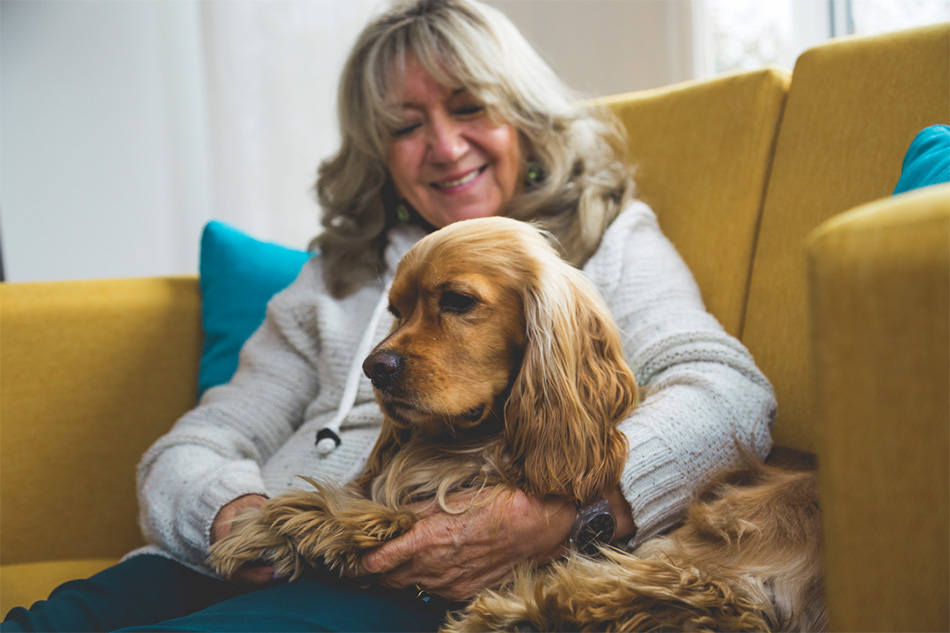Being able to touch and handle your pet all over is an important part of being a pet owner. This means that, when your pet is injured or ill and needs at-home care, then you can safely help them without stress.
It will save you money being able to give at-home care for procedures such as nail clipping, brushing, giving medication and removing parasites.
Being hands-on also helps you learn what is ‘good’ and normal for your pet, so then you can spot something early when they aren’t well.
Start early
Even if your pet is healthy, it is best to do this practice now when you don’t need it, so it is easy when you do!
Although long haired and brachycephalic (flat-faced) animals need everyday health care, your short haired mixed breed pet will still need to learn this skill for times when they are poorly in the future.
Things to practice
You’ll want to be able to touch every part of your pet, make sure to include:
- Holding paws and looking at nails
- Looking into ears
- Smoothing lightly around the eyes
- Looking under the tail
- Looking at teeth
- Fussing around the neck. Vaccinations and flea drops go into the back of the neck so you can get them used to the feeling by rubbing/lightly scratching that area.
Top tips for your practice sessions
- Keep sessions short. Reward well and make it fun!

Make the health checks part of a lovely fuss, here gently checking paws during a sofa cuddle.
- Make it part of lovely fuss. Extend fuss to different parts of the body to increase the area they accept you to touch. Also increase the time you hold or stay in one place.
- Let your pet tell you what is OK and what isn’t. Look for calming signals for when to stop. Read our article on this body language from cats and dogs using the link below.
» Read our article: Learning to read the subtlest of body language
- Use distractions and diversions such as lickimats and fussing the head whilst touching elsewhere.
- If they don’t like it, then go gradually in your training. See our further advice using the link below. If your pet is clearly distressed, seek advice from your vet.
» Read our article: Touch training for reluctant pets
Extra details
- Get them used to being near unusual objects such as nail clippers, brushes, flea treatment syringes and tick removers so they are less scary when they come out to be used.
- Once they are happy to be touched whilst in a familiar room, then do it in different places. This is called ‘generalisation’. It is especially useful if you can handle them whilst they stand on a lino/hard floor (or table if they are small) as it is like a vet’s room surface.
» Read our article: Touch training for reluctant pets
» Read our article: Getting your cat to love their carrier
» Read our article: Learning to read the subtlest of body language